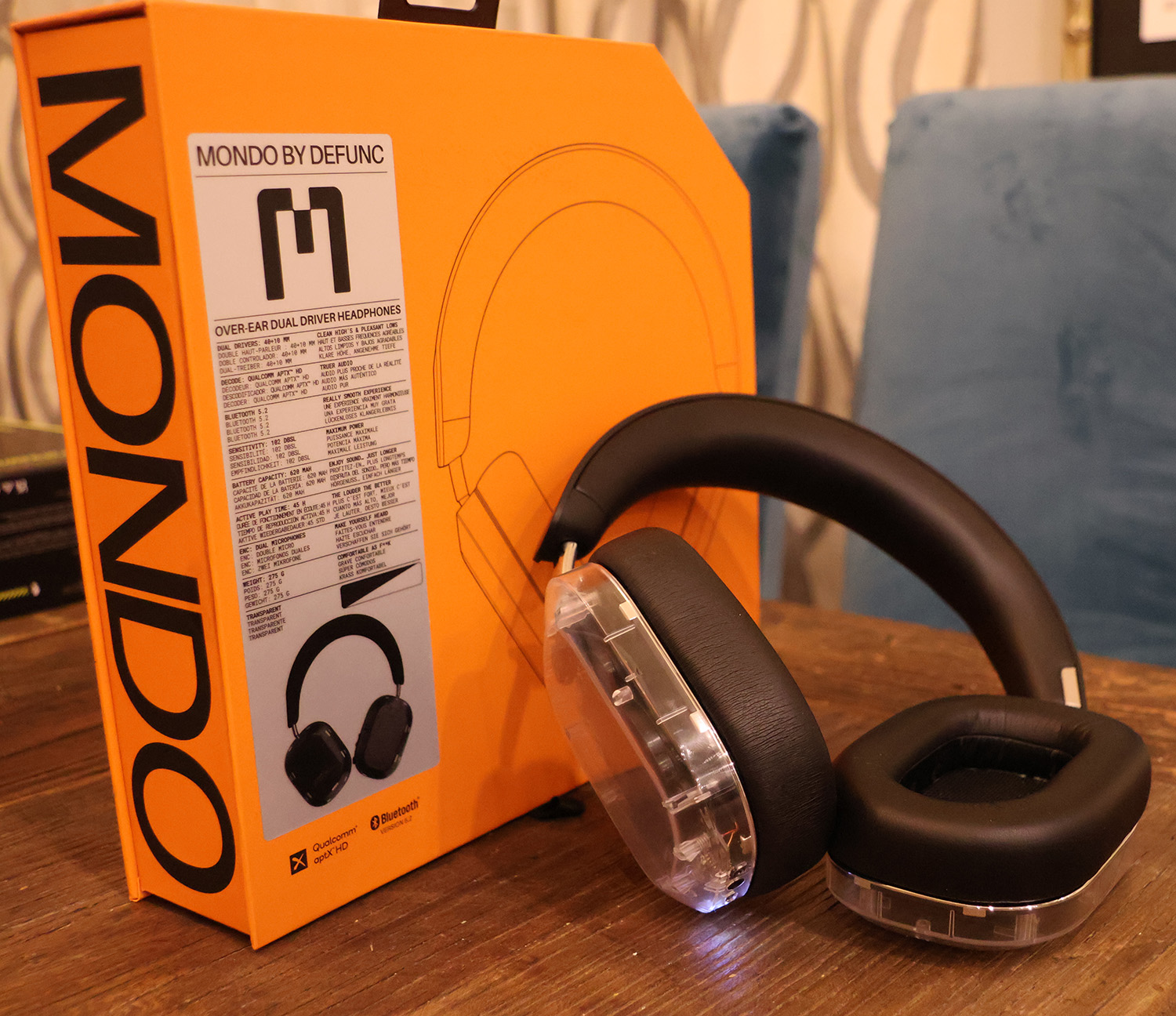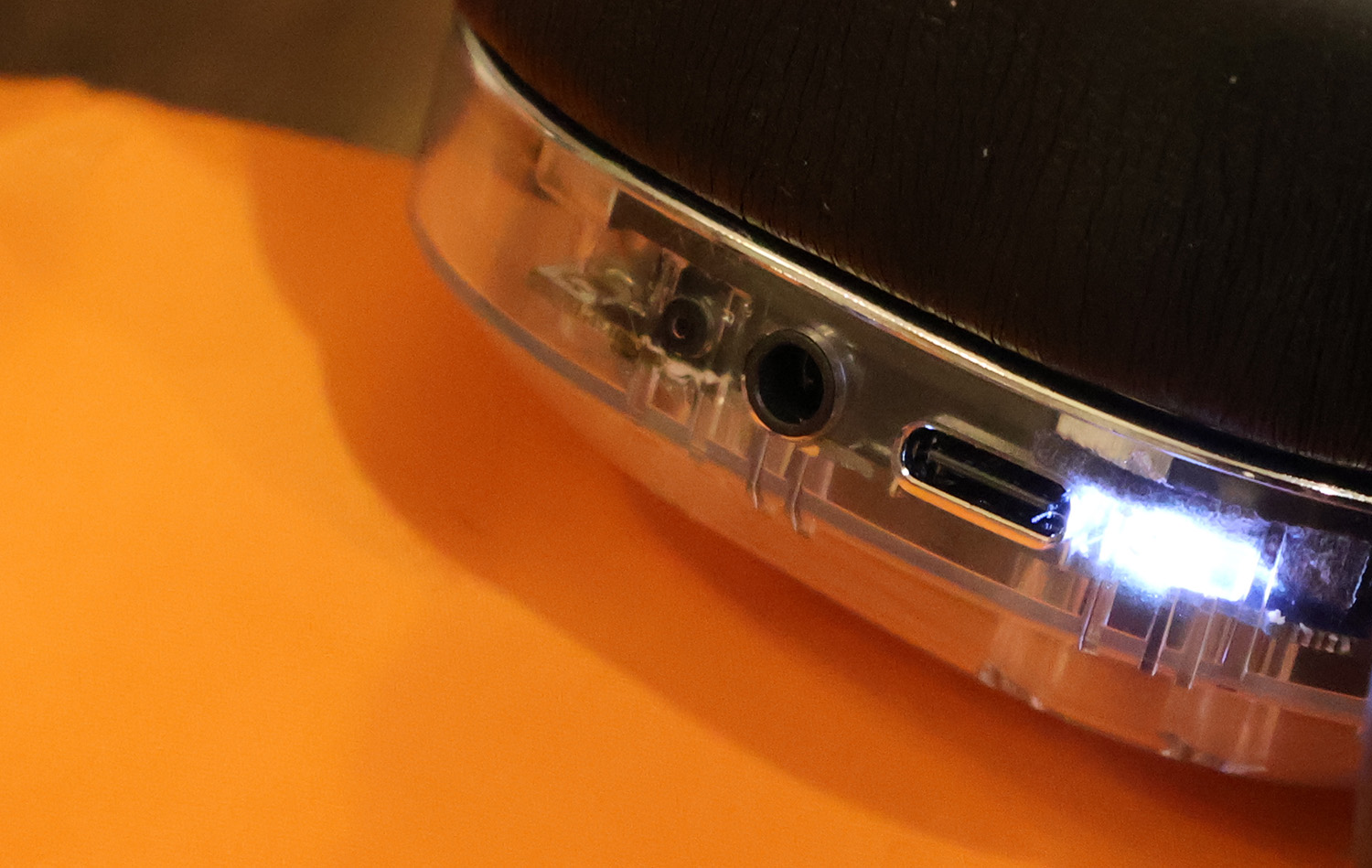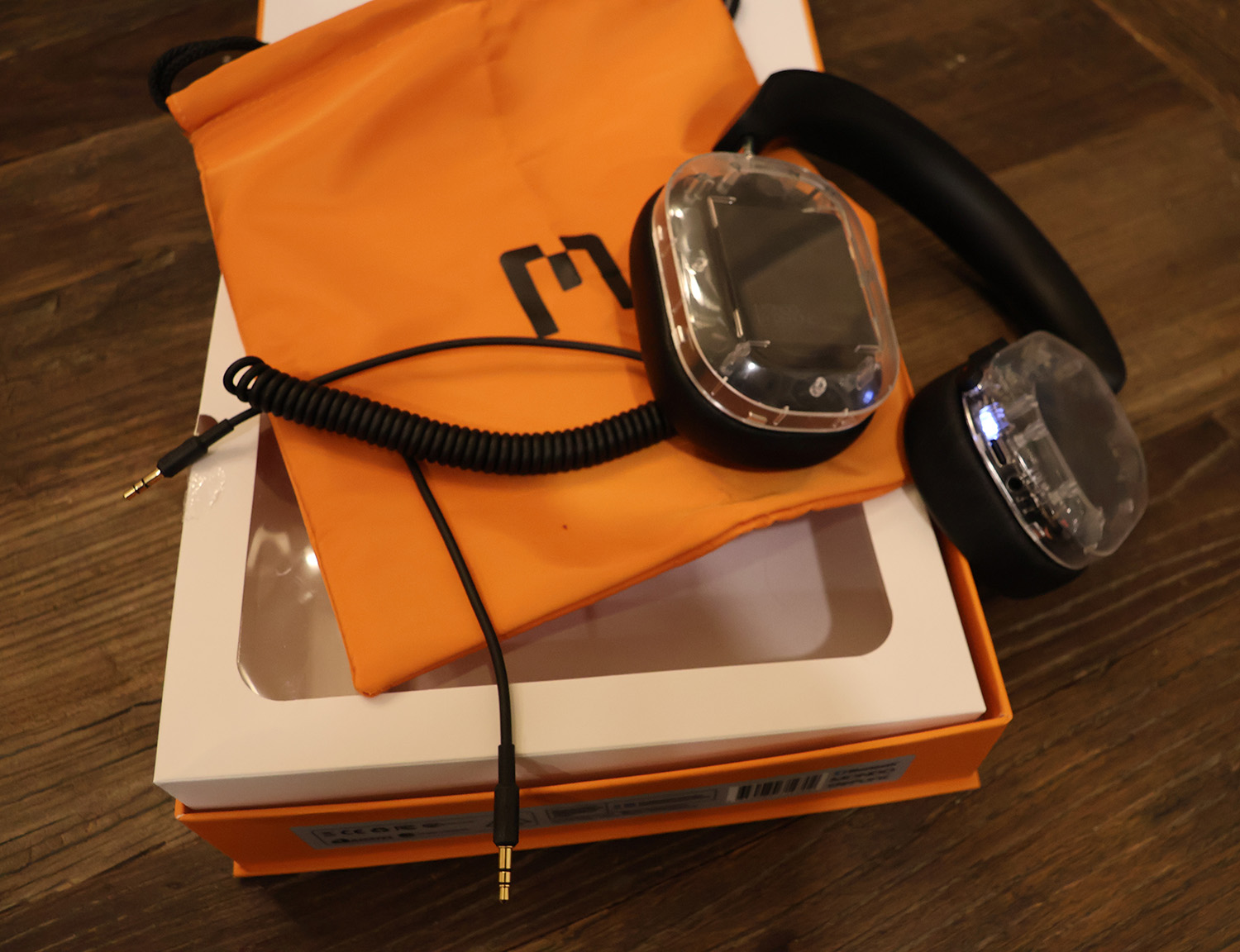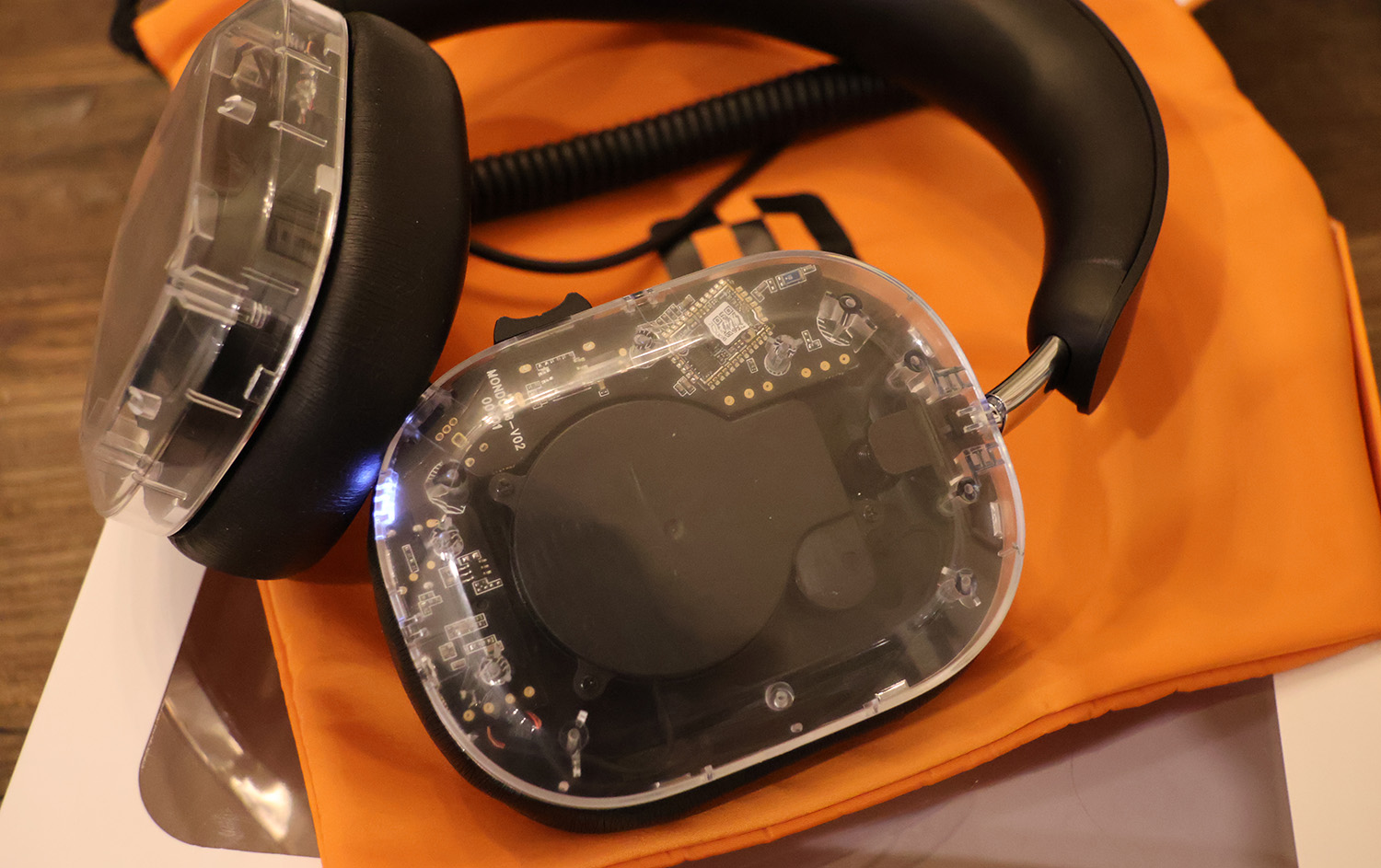
It seems that Sweden is where funky audio designs are born in greater numbers than anywhere else. There are a slew of companies churning out powerful personal audio devices that don’t shirk in the way of performance, providing the world with unique products that stem from this Scandanavian wonderland. So while the company Defunc may not be quite as internationally renowned as other marques, it joins a community of like-minded designers and engineers from that Northern country that are driving forward the entire market. One of their latest models, the Mondo over-ear headphones, look to be a great addition to the sector. Do they hold up to expectations? Read on to find out!
Specifications of the Defunc Mondo headphones
- Colours: Clear, Black, “Greige”
- Bluetooth Version: 5.2, APTX HD
- USB-C Charger
- Battery: 620 mAh, 45H of playback
- Dual Drivers: 40mm and 10mm
- Dual Microphones
- Frequency range: 20Hz – 20kHz
- Weight: 275g
Unboxing the Defunc Mondo headphones
The Mondo’s come in an attractive, orange cardboard box with a jaunty angle cut into the top corner. A silver sticker shows off the specifications in multiple languages in one column, while the second column acts as all-caps hype, promising that the 102dB sensitivity provides “MAXIMUM POWER”, while the 45hr playtime suggests that “THE LOUDER THE BETTER”. Other specs shout that there’s a “REALLY SMOOTH EXPERIENCE” with “TRUER AUDIO”, whatever that means, and “CLEAN HIGHS & PLEASANT LOWS” allow you to “MAKE YOURSELF HEARD”, all with a model that is, and again I quote exactly, “COMFORTABLE AS F**K”.
That’s a lot to live up to.

Inside the box is a plastic shell with the headphones nestled in. The model I tested, the clear ones, showcase the circuit board on the right earcup, while the left shows off the 620mAh battery that provides a decent 45 hours of playback time. The earcups rotate 90 degrees, but do not fold up into a more compact form for transport. Two buttons are located on the right pad—one that slides up and down, the other that’s both a push button and a rotating dial with a small red dot to show its position. A USB-C input is also on the right side, as is the (very welcome!) 3.5 mini-jack input. The included cable is coiled, a unique option that I’ve seen, and while it does make for far less clutter, it also causes a bit of strain if your device is further away from your headphone position.
A soft, orange, satin-finish bag is included for carrying the headphones around, and while it will do nothing for protection save from the elements, it’s at least functional. A handsomely designed manual is also include, which provides details about the various functions of the unit.
Setting up the Mondo headphones
Setting up the Mondo over-ears was a breeze. The small, round control button serves multiple functions, including powering on the unit. It does require a bit of a patience—you have to hold for 5 seconds to actually power on, but once you learn that it’s easy enough to navigate.
Sliding the up/down button adjusts the volume when listening over Bluetooth, though does nothing when wired. A note about wired operation—while this does allow you to listen to, say, airplane systems, or to your favourite portable player, the unit does need to be powered on, meaning it’s not a full analogue bypass. With the ample battery power it obviously should not be an issue, but this is something to keep in mind.
Twisting the control dial adjusts track up and down (a satisfying mode compared to other models), and a quick press does play/pause as expected.
The app, available for iOS and Android, provides a remote control for the various track select/volume features, a user EQ, software update, and a find device option. It took three or four times to update to the latest firmware (from 4.2 to 4.8), and I got stuck in a loop where it never did allow me to go to the current version. Without any info about what the update actually provided I wasn’t too bothered, but it shows a bit how the slick looking interface is let down by functional deficiencies.

Sound quality of the Defunc Mondo headphones
While I’m not sure it warrants the expletive, by far the best attribute of these headphones is their comfort. Weighing in at a measly 275g, you quickly forget they’re even on your head. The tension on the headband is well designed, and the soft earcups do an adequate, if not remarkable, job of at least attenuating outside noise.
The sound quality of the Mondo over-ears are, at best, middling. While promising a dual-driver design, there’s still a relatively thin, reedy, unimmersive sound with certain tracks, even after tweaking the EQ. There’s not much in the way of bass coherence or high-treble detail in things like the shimmer of a ride cymbal, and the mid-range feels somewhat anemic, particularly at mid-volume. It’s a shame, as all the other elements, from control to looks to comfort, are all top-of class, and it’s only when actively listening to them that we’re let down by the Mondos.
That said, the sound is rarely harsh or bloated, and if doing some non-critical listening to podcasts or the like, or even during a regular commute where the fidelity of the audio is of secondary import, then these might well serve your purpose. It’s clear that the sacrifice in terms of weight means that the drivers themselves lack the mass to drive that much air inside the over-the-ear construction.
Listening to tracks like Hans Zimmer’s Blade Runner 2049 soundtrack I got the feeling that the soundstage is small, the bass loud yet mostly rattling, and some of the mid-range instruments lost in a murky way. While compatible with APT-X, serving higher bitrate signals over Bluetooth, it really didn’t seem like things improved much. Old-school hip hop from Run DMC didn’t do much better, nor did something as shimmering as Peter Gabriel’s So, or Seal’s Bring it On. The maximum volume was a bit lacking as well, likely beneficial to long-term hearing health but not ideal in loud environments where the lack of active noise-reduction will be an issue. One track that actually did show some promise was Joni Mitchell’s Free Man in Paris from the newly remastered release on Tidal—here the soundscape hinted at what could be, with a bit more in the way of bass drum articulation, the shimmer on the guitars, and the crystalline nature of Joni’s effervescent singing. It’s helped that it’s one of the best recordings of all time, and in direct contrast to other similar models these still prove lacking, yet it gives hope to the ability of Defunc engineers to be able to better tweak the hardware foundation to provide better audio results.
Listening to podcasts (such as the sublime A History of Rock and Roll in 500 Songs), with its mono clips and mostly spoken-word presentation, was perfectly fine. Thanks again to the comfort of the model, I was able to spend hours without any sense of discomfort.
One small concerning aspect is that you can hear some high-frequency noise when the mini-jack is inserted, it acted as a kind of antenna for RF noise from nearby wireless devices. Again, I’d rather have a wired option than not, but it’s something to consider for those interested in critical listening sessions.

Final thoughts on the Defunc Mondo dual driver headphones
Unfortunately, while grand promises of “TRUER AUDIO” and “CLEAN HIGHS & PLEASANT LOWS” don’t quite live up to the hype, the Mondo over-ear headphones are “COMFORTABLE AS F**K” as promised. At best the sound is decent, satisfactory for everyday use but in general it’s a fairly unremarkable audio experience compared to similarly priced models.
For those that prioritize comfort over function there’s still plenty to recommend, and the simplicity of the controls and inclusion of wired operation is more than welcome. While my hopes were a bit dashed with these headphones, I believe the foundation is a promising one for this type of form factor, and with a bit more attention paid to the sound quality these easily could become daily drivers. For now, unfortunately, they’re best used for purposes of comfort over any other consideration.
Shop the Defunc Mondo headphones and explore more over-ear headphones for comfortable listening at Best Buy today.




